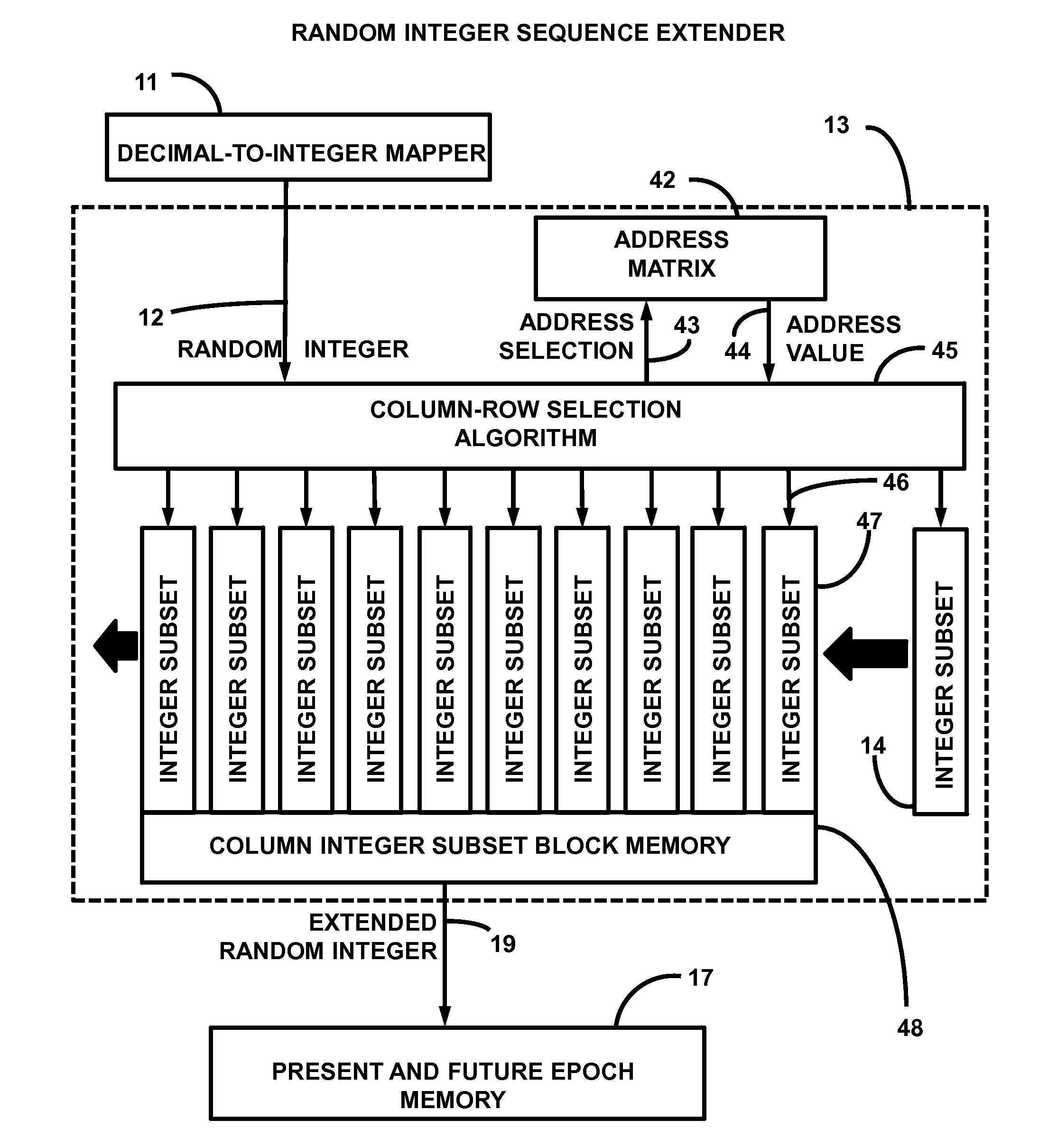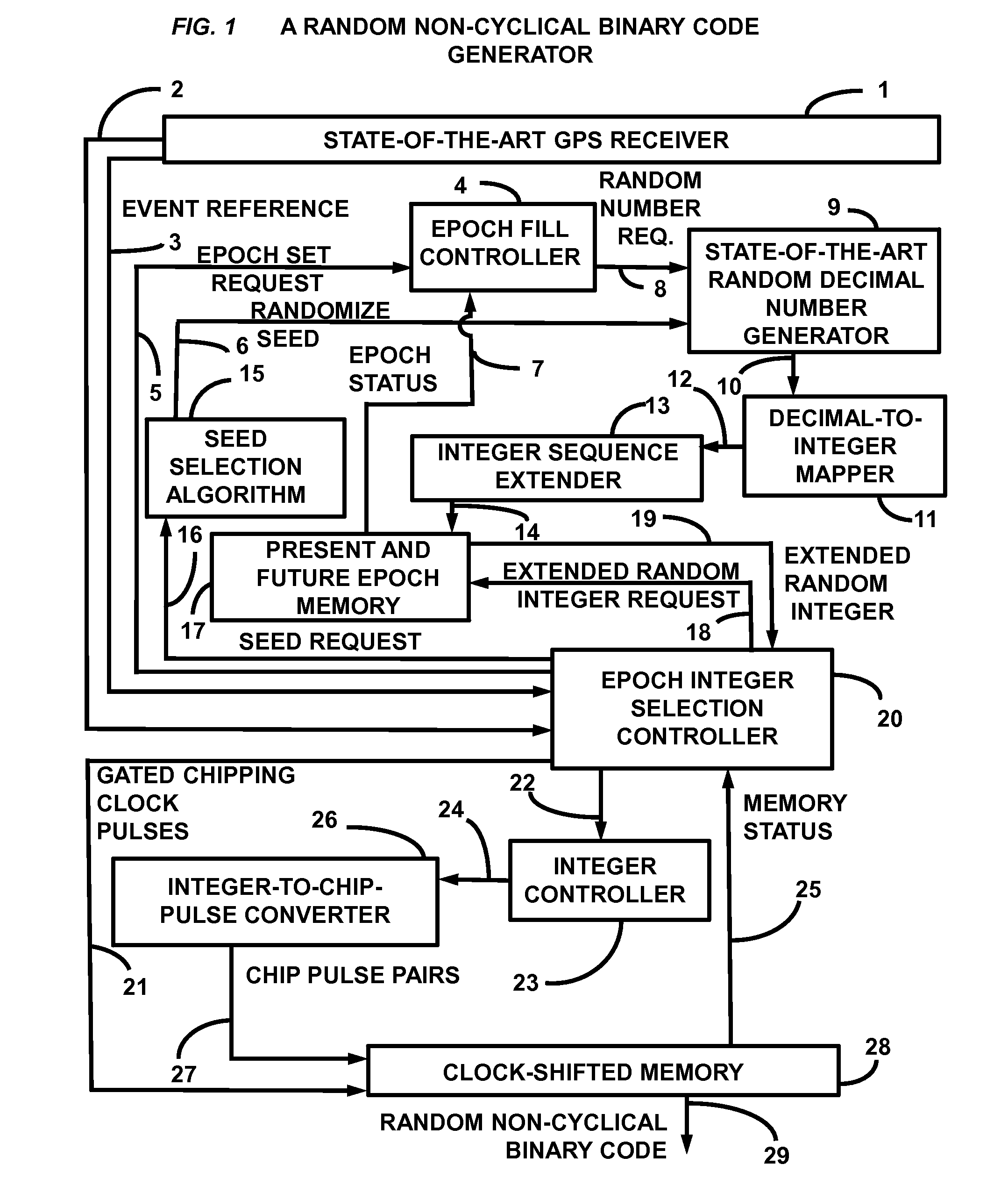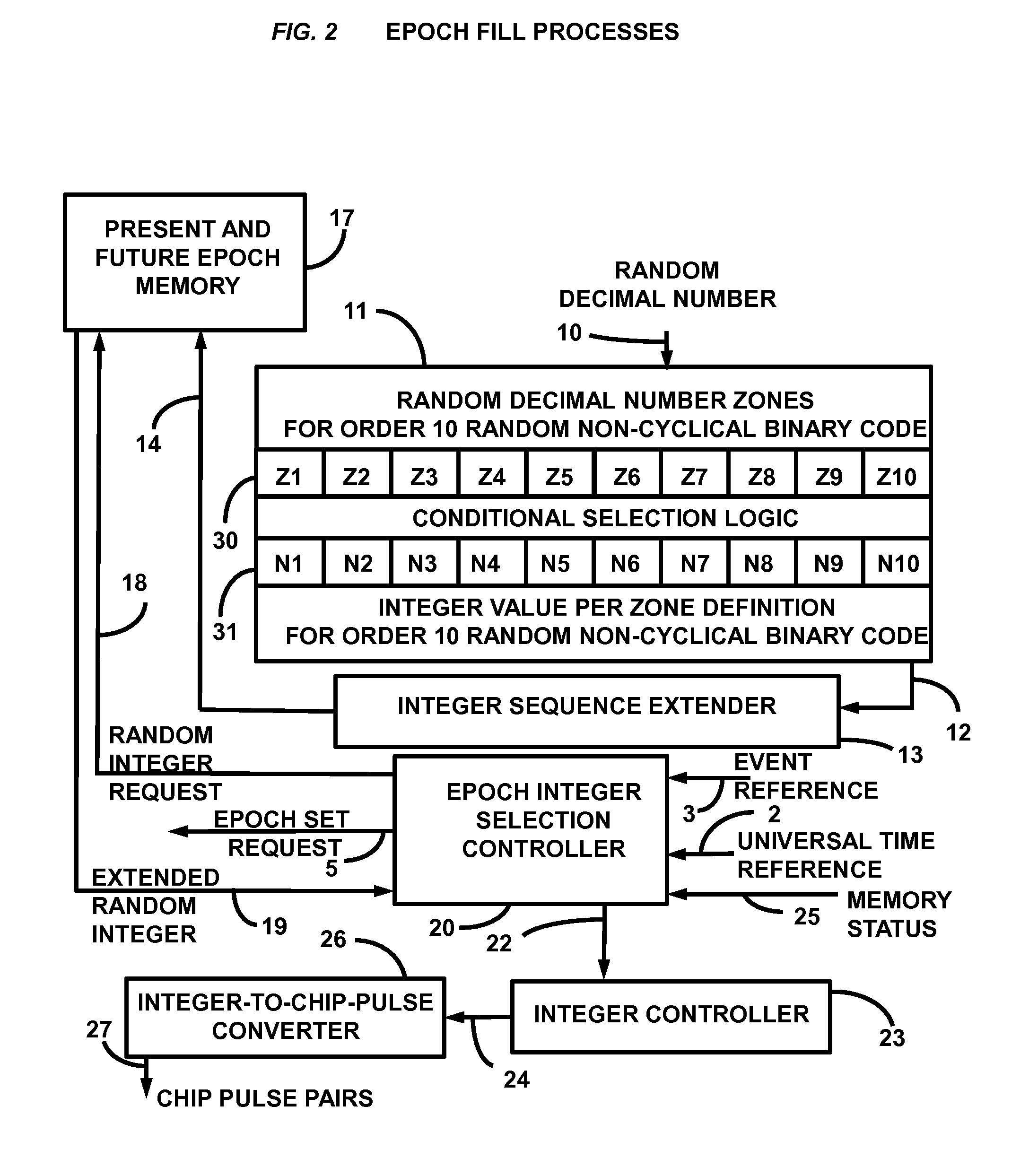Random Non-Cyclical Binary Code Generator
a non-cyclical, binary code technology, applied in the direction of transmission, electrical equipment, etc., can solve the problems of inefficiency in communications spectrum usage and fixed local replica precisely delayed from universal time, and fixed broadband power spectral density profiles that cannot be changed. to achieve the effect of more robustness
- Summary
- Abstract
- Description
- Claims
- Application Information
AI Technical Summary
Benefits of technology
Problems solved by technology
Method used
Image
Examples
Embodiment Construction
[0056]In the detail in FIG. 1, I describe the random non-cyclical binary code generator elements. A proven off-the-shelf GPS receiver 1 provides the chipping clock pulses 2 and the event reference pulses 3 that form the time synchronization reference for the random non-cyclical binary code generator. The epoch fill controller 4 initiates all random number requests 8 in response to the epoch status 7 and epoch set request 5. Initialization control of the random non-cyclical binary code generator is provided by the epoch integer selection controller 20 consistent with the event reference 3 and the chipping clock pulses 2. Code startup consists of a fast forward of the selected epoch until code phase in chips at the center of the clock shifted memory is synchronized with GPS universal time in the event reference 3. At this point, the gated clock pulse 21 source is turned on, providing chipping clock pulses to the clock-shifting memory 28. Each new epoch at epoch rollover is initiated w...
PUM
 Login to View More
Login to View More Abstract
Description
Claims
Application Information
 Login to View More
Login to View More - R&D
- Intellectual Property
- Life Sciences
- Materials
- Tech Scout
- Unparalleled Data Quality
- Higher Quality Content
- 60% Fewer Hallucinations
Browse by: Latest US Patents, China's latest patents, Technical Efficacy Thesaurus, Application Domain, Technology Topic, Popular Technical Reports.
© 2025 PatSnap. All rights reserved.Legal|Privacy policy|Modern Slavery Act Transparency Statement|Sitemap|About US| Contact US: help@patsnap.com



